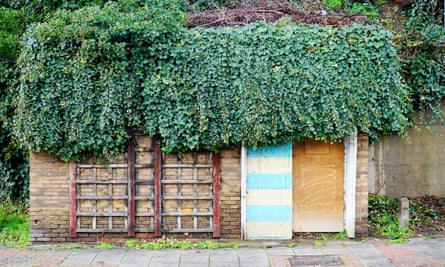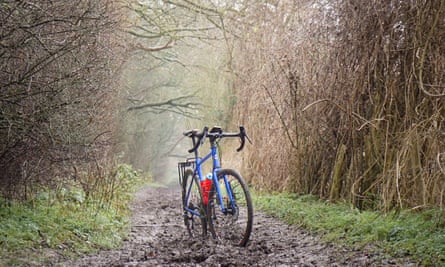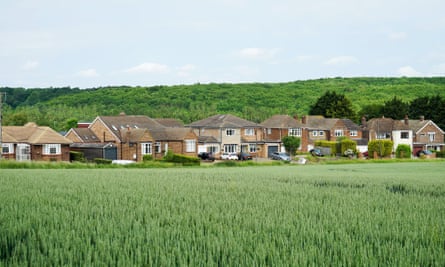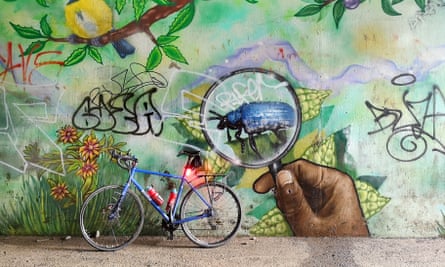
There’s a special place near where I live. To get there, you head down the road with all the fly-tipping, go through the motorway underpass, then turn left by the second-hand car garage and the greasy spoon cafe with a spelling mistake in its name. When you reach the factory with the rusting metal pipes and enormous concrete chimney, push through the scraggy bushes opposite and you have arrived.
Blond reedbeds surround you, head high, whispering in the wind. The call of cuckoos sounds like time gone by. In summer, swifts shriek overhead and sand martins swoop over the pools where endangered water voles make their home. Wandering through the marshland is like being transported to a wilder, quieter, more hopeful world. This secret discovery, or one like it, lies on the outskirts of towns across the country, part of the forgotten edge lands that we travellers ignore in favour of more exotic destinations. I spent a year searching for wildness closer to home than ever before – and it was a fascinating journey.
I am lucky enough to have explored many parts of the world. While one or two of my adventures have smug eco-credentials (cycling around the world and crossing oceans by boat, for example), most of my travels have been less environmentally friendly, even damaging to the wild places I love. I wondered if there was a different approach to exploration. I had walked through India and paddled the Yukon, but not visited that local wood by the shopping centre or seen what was at the end of that ordinary-looking street in my town. That seemed daft. It is a relatively modern concoction that adventurous souls need to leap across time zones to quench their curiosity. Maybe the undiscovered country of the nearby could be just as intriguing as Jeddah or Botswana, if only I saw it that way.
During lockdown many of us benefited from exploring nature on our doorsteps, connecting more closely with our locales. But this concept deserves to be more than a temporary compromise before we all jump back on flights to the sunshine. Our society has become disconnected from the wild world around us and I wanted to try to put nearby nature back into my everyday life. I wanted to prove it is possible to get regular small doses of the delights of travelling without having to wait until your summer holiday or the trip of a lifetime.

So I bought the Ordnance Survey map that covered where I live – 20km by 20km of a very ordinary corner of the world on the fringes of a big city in the south of England – and committed to spending a year exploring its modest span. Once a week I visited a single 1km grid square, chosen at random, and delved into the minutiae of every street, hill and warehouse I found. I tried to be enthusiastically curious about whatever I found, as I always am when I am abroad.
I worried at first that the plan was restrictive and banal, that my wanderlust would hate it, and that my boring neighbourhood could not compare with the mountains or coastlines I love. But I persevered with my tiny odyssey, and through repeating these outings the experience steadily became more meaningful.

I went out in all weathers, grumbling through winter’s grey, wet days, but also then appreciating spring frosts and summer sun all the more. Some days I cycled around the grid squares, but usually I walked. My moods varied, too. Some weeks, I felt I was too busy to waste time wandering around random places. I had to consciously slow myself down, remembering how much I valued spending time outdoors. I would force myself to sit on a log, with no phone or music to distract me, and simply pay attention for a while. Without fail, I returned home feeling better than when I set out. Taking a camera with me also helped me to slow down, to be observant, to pay attention, and to try to regard everywhere as equally potentially interesting.
I enjoyed so many glimmers of beauty and intrigue over the course of the year. There was the ancient wood pasture dotted with vast, gnarled hornbeam trees; the weighty history of a tiny chapel that stood empty for six centuries since the Black Death wiped out the whole village; the fascination I feel in new places about all the homes I pass whose stories I will never know; the contrasts between the vineyards and graveyards and railway yards; and the kestrels and brown trout sharing the same landscape as kicked-in windows and burned-out cars. This was travel and exploration in its most condensed form.

One morning, towards the end of the year, I found myself walking up a quiet, gently curved valley. I had never been here before and something felt different. The fields were unkempt and shaggy, buzzing with insects, and strewn with wildflowers. The hedges had thickened, growing up into tall trees. The sun shone brightly and the area filled me with a sense of wellbeing that I couldn’t quite put my finger on until I realised that the land was beginning to rewild. The difference from the bright green buzzcut of the monoculture fields I was used to was profound. I paused at the head of the valley to look back in delight.
Two dog walkers appeared behind me. Aware that I was concentrating on the view, one of them stopped and spoke.
after newsletter promotion
“Such a shame, isn’t it?”
“What do you mean?” I asked in surprise.
“The golf course,” he explained. “All this was a golf course until it closed seven years ago. Look, you can still see a water hazard down there.”

I expressed amazement that this wild landscape had been a manicured golf course so recently.
“Yes, it’s such a shame that it’s gone. Look at it now, there’s nothing here. Just nature.”
Travelling around my unremarkable map for a year gave me much to remark on. It was one of the most interesting journeys of my life and shifted my perspective on the way we choose to travel. It made me calmer and healthier. It fostered feelings of curiosity, awe, gratitude and a deeper awareness of nature than I had experienced before. The more you look, the more you see. The more you see, the more you learn and care. Your local map is a fractal of the world at large. Embrace it, care for it, cherish it, and discover it. You might just find that a single map is enough exploration for an entire lifetime.
Local: A Search for Nearby Nature and Wildness by Alastair Humphreys is published by Eye Books (£12.99). To support the Guardian and Observer, order your copy at guardianbookshop.com for £11.43. Delivery charges may apply



